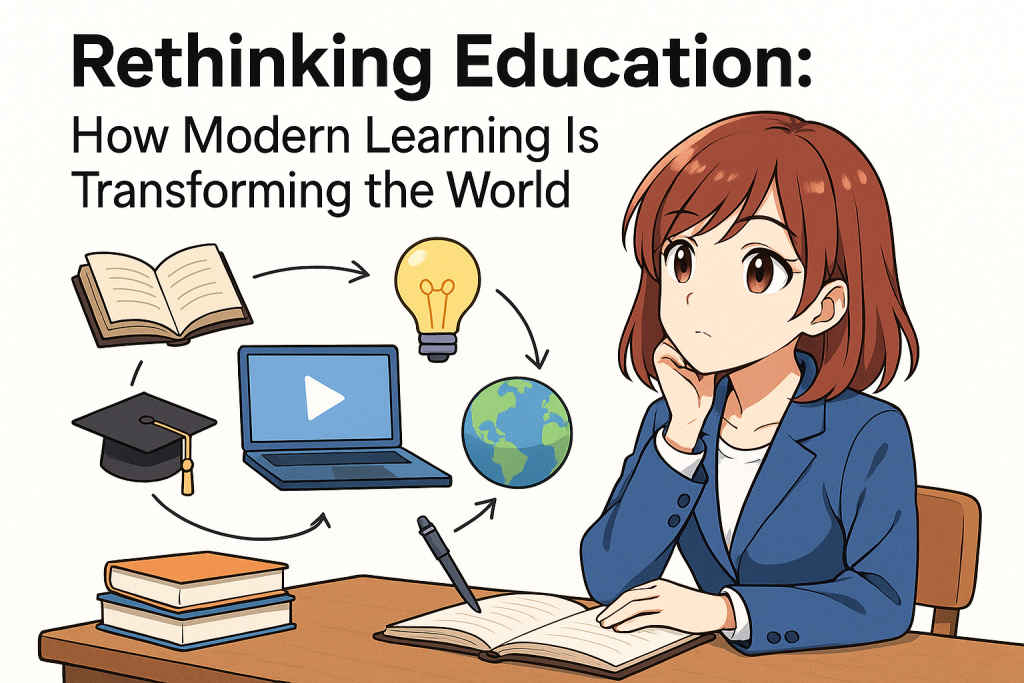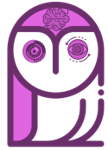Education is no longer confined to chalkboards and textbooks. The 21st century has rewritten the rules of how, where, and why we learn. In the modern classroom 15x here, students and teachers are stepping into a world of innovation, technology, and creativity that makes learning more human than ever before.
The Global Shift Toward Smarter Learning
Across continents, schools and universities are reinventing education to match the speed of change in our world. The rise of artificial intelligence, automation, and global connectivity means students need new skills — and fast. Traditional memorization has given way to curiosity, collaboration, and lifelong adaptability.
From Teaching to Guiding
In the past, teachers were the sole source of information. Today, their role is evolving into that of a mentor, coach, and collaborator. Instead of lecturing for hours, teachers now:
- Facilitate discussions and group projects.
- Use digital tools to personalize lessons.
- Focus on critical thinking rather than rote learning.
This shift transforms classrooms into creative labs where mistakes are celebrated as part of learning.
Technology: The Great Equalizer
Technology has done what centuries of reform couldn’t — made education accessible to nearly anyone, anywhere.
Key innovations include:
- 🎥 Virtual lessons that connect students across countries.
- 🤖 AI tutors that provide instant feedback and adaptive challenges.
- ☁️ Cloud-based learning where all resources live online.
A child in rural Nepal can now access the same materials as a student in New York. That’s not the future — that’s happening today.

Learning Through Experience
The world’s best lessons don’t always come from books — they come from doing. That’s why more schools are introducing project-based and experiential learning, where students build, experiment, and solve real problems.
For example:
- In Denmark, students run mock businesses to learn economics.
- In Japan, robotics clubs design AI-driven prototypes.
- In Brazil, students explore local ecosystems to study sustainability.
Experience replaces memorization, turning learners into creators.
Emotional Intelligence and Mindfulness
Modern education doesn’t just teach math and science — it teaches humanity. Schools now understand that emotional intelligence (EQ) is as vital as IQ.
Mindfulness programs help students manage stress, improve focus, and build empathy. When learners feel balanced, they perform better — not just academically, but socially and mentally too.
The Rise of Global Learning
Borders are disappearing from education. Platforms like Coursera, edX, and FutureLearn allow millions to study together online. Students in Egypt debate with peers in Canada; a professor in India mentors learners from Africa.
This global exchange creates a new kind of literacy — cultural intelligence — preparing young people to thrive in a connected, multicultural world.
Microlearning and Continuous Growth
The modern learner doesn’t stop after graduation. Careers evolve, and so must education. Enter microlearning — short, focused lessons that fit into daily routines.
- 🎧 Listen to a 10-minute podcast on leadership.
- 📱 Watch a short video on coding.
- 📝 Complete a five-question quiz before bed.
These bite-sized moments make learning as natural as scrolling through social media — but far more meaningful.
Sustainability and Purpose-Driven Education
Students today care deeply about the planet. Schools are responding with eco-education, blending environmental science with hands-on sustainability projects.
Kids grow school gardens, measure air quality, and learn how their actions affect global ecosystems. The message is clear: learning isn’t just about earning — it’s about impacting.
The Future Ahead
The next generation of education will blend artificial intelligence, human empathy, and lifelong curiosity. Imagine a world where:
- AI tracks your learning journey from childhood to retirement.
- Virtual reality lets you walk through the solar system.
- Global mentors guide you through every career change.
Education won’t just prepare people for the world — it will help them shape it.
Final Thoughts
The future of learning isn’t about memorizing facts — it’s about igniting minds.
Every innovation, from AI tutors to sustainability projects, pushes us closer to a world where education is not a privilege but a shared human experience.
Learning is no longer a straight path from school to work — it’s a lifelong adventure of growth, connection, and purpose. 🌟
“The beautiful thing about learning is that nobody can take it away from you.”
— B.B. King
Education as a Cultural Bridge
In the 21st century, education is doing more than sharing knowledge — it’s building understanding between cultures. As classrooms go digital and global, students are exposed to new perspectives that challenge stereotypes and inspire empathy.
For example:
- Language-learning apps pair users from different continents for real conversations.
- International schools blend curriculums to include global history, art, and ethics.
- Virtual exchange programs allow students to collaborate on social and scientific projects with peers across the world.
This cross-cultural approach builds tolerance, curiosity, and respect, shaping a generation of global citizens ready to solve problems that no single country can tackle alone.
Redefining Success in Education
Traditional education measured success by grades, test scores, and diplomas. But today’s world demands more flexible metrics.
Modern educators now ask:
- Can students think critically?
- Can they work well in teams?
- Do they adapt to change and solve complex problems?
Employers and universities alike value creativity, communication, and resilience — skills that come from experience, not memorization. The definition of success is shifting from achievement to ability.
The Power of Creativity and Innovation
Creativity is no longer considered a luxury — it’s a survival skill. Automation and AI can perform routine tasks, but they can’t imagine, invent, or dream.
That’s why schools are integrating creativity into every subject:
- In science, students design eco-friendly prototypes.
- In literature, they write digital stories and interactive narratives.
- In math, they use data to model social change or environmental patterns.
By merging logic and imagination, modern education produces not just employees — but innovators and visionaries.
The Science of How We Learn
Neuroscience is revealing fascinating truths about how our brains absorb information.
Modern teaching methods now incorporate:
- Active learning — where students engage physically and mentally with the material.
- Multi-sensory techniques — combining sound, movement, and visuals for deeper retention.
- Rest and mindfulness — understanding that sleep and calm are essential for focus.
Some schools have even adjusted their schedules, starting later in the morning to align with students’ natural biological rhythms. The result? Better concentration, higher motivation, and happier learners.
Learning for a Sustainable Future
Education is increasingly intertwined with global responsibility. From climate awareness to social justice, schools are becoming hubs of change.
Programs now focus on:
- 🌿 Environmental literacy — teaching how ecosystems function.
- 🧑🤝🧑 Social justice and ethics — understanding privilege and fairness.
- 🌍 Community engagement — solving real local problems through teamwork.
This shift transforms education into a tool for planetary healing — empowering students to become stewards of both knowledge and nature.
Voices of the Learners
Perhaps the most powerful transformation is this: students now have a voice.
Through digital platforms and social media, learners share opinions, critique systems, and even design new learning models. Many schools now host student councils and innovation labs, where young minds suggest reforms that adults implement.
Education has become a dialogue — not a monologue.
The Challenge Ahead
Of course, innovation comes with its own challenges.
- Not every region has equal access to technology.
- Teachers need continuous training to keep up with digital tools.
- Students must learn to balance screen time with real-world experiences.
The future of education depends on finding equilibrium — using technology wisely, not excessively, and ensuring inclusivity for all learners.
The Promise of Lifelong Learning
In the past, education ended when adulthood began. Today, it continues for a lifetime.
A modern learner might:
- Take a course in emotional intelligence at 25.
- Learn coding at 40 to switch careers.
- Study art history at 70, just for joy.
The classroom has become a mindset, not a place. Learning is the heartbeat of human progress — and it never stops beating.
The Road Ahead
Looking forward, the future of education will be shaped by creativity, compassion, and technology working hand in hand. Schools will feel more like innovation hubs, and teachers will be more like coaches and collaborators.
Imagine this world:
- Students design their own learning paths guided by AI mentors.
- Every child, regardless of geography, has equal access to world-class education.
- Learning becomes as natural as breathing — a daily act of curiosity.
That’s not just the dream of education — it’s the destiny of humanity.
Education as Humanity’s Greatest Invention
At its heart, education is about transformation. It’s about unlocking what’s possible — inside each mind, each community, and our shared planet.
The future of learning is not about competing for grades but collaborating for growth.
It’s about nurturing thinkers, dreamers, and doers who believe that knowledge isn’t power unless it’s shared.
And that’s the true beauty of modern education — a world where learning never ends, and every mind has a chance to shine.
As always, thank you so much for reading How to Learn Machine Learning and have a wonderful day!
Subscribe to our awesome newsletter to get the best content on your journey to learn Machine Learning, including some exclusive free goodies!

